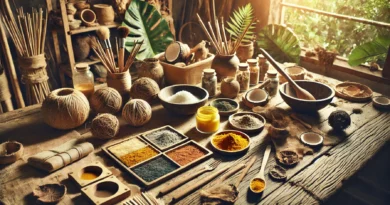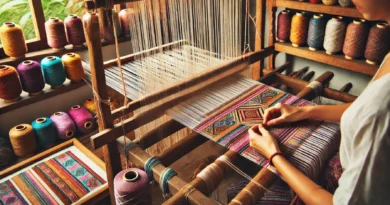The Magic of Mixed Media: Combining Different Forms of Art
In the creative universe, few paths are as liberating as that of mixed media. This artistic approach invites the creator to go beyond the limits of a single technique, exploring the fusion of different materials, textures, and visual languages. By combining elements such as acrylic paint, collages, photography, embroidery, and three-dimensional objects, the artist creates a rich, multidimensional, and meaningful work.
Art in mixed media is not just a technique, but a philosophy that celebrates the diversity of expressions. Often, it arises from the impulse to experiment, to test the limits of what can be considered art. This type of creation also allows complex feelings to be represented more deeply, since each layer or element added to the piece carries a symbolic and sensory weight.
Furthermore, the magic of mixed media lies in the freedom to tell visual stories that don’t have to follow rigid rules. Each work is an invitation to exploration—for both the artist and the viewer. In a world where creativity is increasingly valued, this form of art has attracted both beginner and experienced artists who wish to express themselves authentically.
What Is Mixed Media, After All?
The term mixed media refers to the intentional combination of two or more forms of art or materials in a single piece. This can include paint and paper, but also fabrics, photographs, wood, digital elements, and even recycled objects. The idea is to break away from traditional supports and allow creativity to flow freely.
There is no single formula for creating with mixed media, and that’s exactly what attracts so many artists. The process is fluid, intuitive, and often unpredictable. By working with different materials, the creator develops a greater sensitivity to textures, contrasts, and composition possibilities.
This practice also resonates with contemporary art movements that value experimentation, sustainability (with the use of repurposed materials), and personal expression. Whether in a visual journal, a conceptual sculpture, or an installation, mixed media enables unique and personality-filled visual narratives.
Simple Step-by-Step to Start with Mixed Media
If you want to explore this art form, here’s a basic step-by-step to create your first mixed media piece:
- Choose a base: It can be a canvas, thick paper, MDF, or even a piece of cardboard.
- Select a palette of materials: Paints, collages, fabrics, stamps, colored pencils, and more.
- Create a background: Use acrylic paint or watercolor to paint the base. Don’t worry about making it perfect—the goal is to build layers.
- Add texture: Glue magazine clippings, crumpled tissue paper, masking tape, or fabric pieces.
- Draw or paint over it: Add hand-drawn elements, phrases, geometric or freeform shapes.
- Finish it off: Use spray varnish or a gel medium to protect and seal the piece.
The main tip is: don’t be afraid to make mistakes. The beauty of mixed media lies precisely in the unexpected and the process of discovery.
Creative and Therapeutic Benefits
Working with mixed media goes far beyond aesthetics. It’s also a therapeutic exercise. By combining different forms of art, the artist activates multiple areas of the brain, exercises focus, and stimulates creative problem-solving. This helps reduce stress and improves emotional well-being.
Many art therapists use mixed media as a tool for self-discovery because it allows complex emotions to be expressed visually, without the need for words. Additionally, the hands-on process—cutting, gluing, painting—provides a more intimate connection with creation, which can be very comforting in moments of anxiety or mental overload.
Another positive aspect is that there’s no need for advanced technical skills. Anyone can start, even without previous experience in the arts. The journey is more important than the final result.
Inspirations and Real-World Applications
The magic of mixed media is present in contemporary art galleries, creativity workshops, and even in educational projects. Artists like Robert Rauschenberg and Yayoi Kusama have used (and use) elements of mixed media to explore new forms of expression and engage the public in a sensory way.
In crafts, for example, the mixture of techniques such as embroidery over printed photography or watercolor collages has resulted in unique and innovative works. In graphic design, mixed media appears in book covers, urban murals, editorial illustrations, and even digital animations.
You can also apply this technique in your creative daily life, whether customizing notebooks, decorating spaces, or creating handmade gifts with a special touch. The most important thing is to let creativity speak louder and allow different artistic languages to meet.
Conclusion
The magic of mixed media lies in its freedom, depth, and ability to bring out the best in each form of art. Whether as a tool for personal expression, therapeutic instrument, or professional artistic practice, it invites everyone—beginners or experts—to explore the infinite universe of creation. So, how about trying it today?



